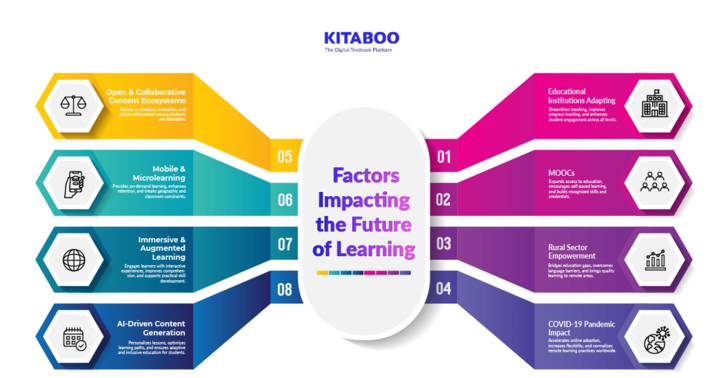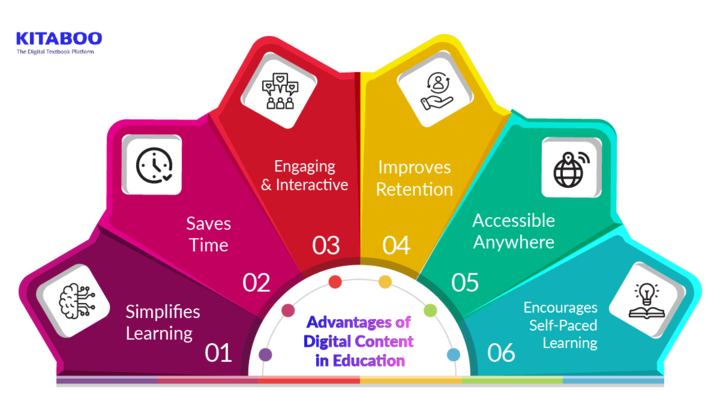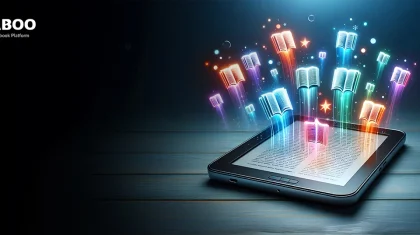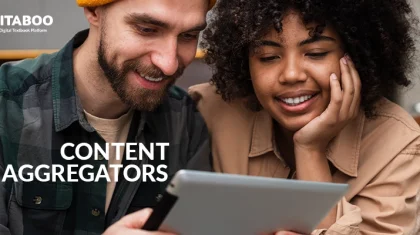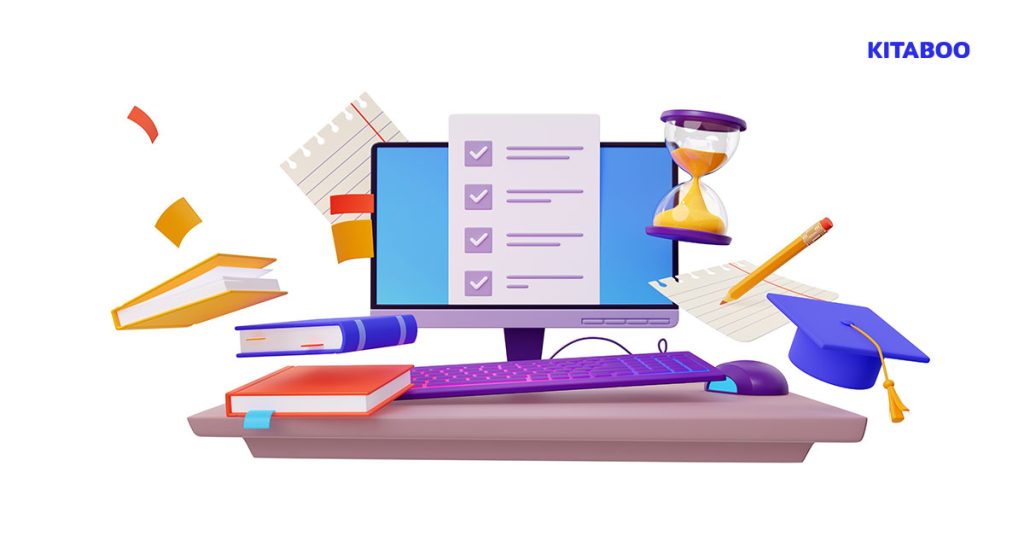
Future of Content in Education: Digital Media in Education
Summarize this blog with your favorite AI:
Future of Content in Education – TL;DR
The future of content in education is transforming learning across schools, online platforms, and rural areas. Digital content trends in education, like AI and m-learning, enable personalized learning experiences.
Immersive learning content trends enhance engagement, comprehension, and practical skill development. Despite challenges like screen time and infrastructure gaps, digital education continues to grow securely.
| Factor | Impact on Learning |
|---|---|
| Institutions Adapting New LearnTech | Enhances efficiency and student progress tracking. |
| MOOCs | Expands learning opportunities and self-paced education. |
| Rural Sector Empowerment | Increases accessibility and overcomes language barriers. |
| COVID-19 Pandemic Impact | Greater flexibility and remote learning acceptance. |
| AI-Driven Content Generation | Adaptive, inclusive, and efficient learning experiences. |
| Immersive & Augmented Learning | Improves engagement, comprehension, and retention. |
| Mobile & Microlearning | Enhances retention and motivation while breaking geographical barriers. |
| Open & Collaborative Content Ecosystems | Encourages innovation and global collaboration among educators and students. |
Digital media has gone on to become one of the most widely consumed content forms globally. The business, education, and entertainment sectors have all taken to digital content as a welcome change.
Post the pandemic, the education sector witnessed a paradigm shift towards digital mediums to cope with the absence of proper classroom teaching. We now live in the digital era and are naturally drawn to bite-sized information that can be acquired on the go.
In such a scenario, learners are also more inclined towards digital content and find it much easier to grasp and retain than the knowledge a regular classroom imparts.
Thus, educational institutions have now popularized digital content education in a blended mode of conducting classes that club together the best of both worlds. Digital aid used in classroom lectures improves the quality of learning to ensure better comprehension and retention in students.
Digital education has had such a positive impact on the learning process that its future is undoubtedly secure. It is favorable for students, teachers, employees, businesses, and parents.
Here are the factors that justify its growth as a sector and factors that promise its heydays ahead as well.
Table of Contents
- Educational Institutions Are Adapting to New Learning Technologies
- Massive Open Online Courses (MOOCs)
- The Rural Sector Has Benefitted Supremely
- The COVID-19 Pandemic Has Had a Significant Impact
- AI-Driven Content Generation in Education
- Immersive and Augmented Learning Experiences
- Mobile and Microlearning Trends (M‑learning)
- Open & Collaborative Content Ecosystems
- Advantages of Digital Content in Education
- Disadvantages of Digital Content in Education
- Conclusion
- FAQs
1. Educational Institutions Are Adapting to New Learning Technologies
The shift to digital content in education has demanded a drastic update from educational institutions.
The need to adapt to this radical shift has been no child’s play. Immense training and dedication from professionals have made this change possible. Moreover, digital content companies have worked tirelessly to enhance the learning experience for students.
The facilities provided by digital learning companies have made the process of imparting education simpler. Evaluations through self-assessments help understand and track the progress of students effectively.
Plus, the facility of digitized learning is not limited to educational use. It can be used to train employees with updated technology in a hassle-free and efficient way.
2. Massive Open Online Courses (MOOCs)
The internet today is flooded with online courses offered in various fields. The use of digital content in education has been increasingly popularized through MOOCs.
The ease and flexibility promised by such online courses encourage young learners and working professionals to learn at their own pace. Certificates and degrees issued on the completion of a said course are recognized by various companies, allowing learners to build on their profile.
The customization of a course based on the ability of a learner to grasp new information is a huge advantage. It facilitates better learning. Regular feedback acquired by these platforms assists in upgrading the course to serve students better.
3. The Rural Sector Has Benefitted Supremely
Rural areas have often faced the difficulty of not having access to quality education, an imbalanced teacher-student ratio, and the absence of a proper educational environment.
With education through digital mediums, teachers can reach out to students remotely and teach them through digital content. Digital media also enables teachers and students to overcome the language barrier, facilitating better education.
Constant efforts to develop the digital infrastructure globally are made, especially in rural areas, to further the reach of digital education. Empowering rural learners is the primary focus.
Updating the design and means of delivery of Learning Management Systems (LMS) links directly to the quality of education through online courses. The internet has become increasingly affordable and accessible. In such a scenario, making the most of its benefits is the right way to go.
Guide:
How to Build an eBook Store
4. The COVID-19 Pandemic Has Had a Significant Impact
The ultimate shift to an online mode of education came about as a result of the global pandemic. Whether it was a boon or a curse is highly debatable.
The perception of education turned its head. Although it was initially a challenge to adapt to this change, it brought along with it a fair share of advantages.
Students can learn from the comfort of their homes and make the most of their knowledge whenever and wherever. Online mediums also allowed teachers and students to connect remotely, enabling a far and wide reach.
Over time, digital education grew on people and has now become widely accepted as a welcome change. In the future, we can expect new and advanced technologies to be incorporated to further enhance digital education.
5. AI-Driven Content Generation in Education
Artificial intelligence is shaping the future of content in education by personalizing learning experiences.
AI tools analyze learner data to create customized lessons, quizzes, and pathways for individuals. These AI-driven content generation systems also save educators time by automating grading and feedback.
The rise of digital content trends in education highlights AI as a key driver. It enables scalable and adaptive content creation for learners across different levels and needs.
Intelligent algorithms ensure content evolves based on learner performance and engagement. This approach makes education more inclusive and efficient.
The future of interactive educational content will be dominated by AI-generated content. From dynamic assessments to personalized learning paths, AI enables meaningful learning outcomes.
It is transforming the EdTech content future by combining automation with personalization. The immersive learning content trends are setting the stage for smarter, data-driven education systems.
6. Immersive and Augmented Learning Experiences
Immersive technologies are redefining the future of content in education by enhancing engagement and understanding. Augmented reality creates environments that bring abstract concepts to life for students everywhere.
These digital content trends in education enhance learning interactivity. They allow learners to interact with complex models and scenarios in real time. Such experiences promote better comprehension and retention while making learning more dynamic.
The future of interactive educational content depends on accessibility to AR and VR tools. These tools let students explore lessons beyond textbooks and screens.
EdTech content future innovations also include AR headsets and VR simulations. They help educators deliver personalized, impactful lessons to every student.
The growing immersive learning content trends emphasize practical skill development. They also focus on experiential learning to prepare students for real-world challenges.
7. Mobile and Microlearning Trends (M-learning)
The future of content in education emphasizes mobile-first learning for flexibility and convenience. Mobile devices allow students to access lessons anytime. On-demand accessibility is one of the thriving digital content trends in education.
Another digital content trend in education is Microlearning. It delivers bite-sized lessons, improving retention and making complex topics easier to understand.
The EdTech content future innovations focus mainly on mobile apps. These apps will help you create engaging, interactive educational content for learners. Immersive learning content trends like gamified quizzes and videos enhance focus and student motivation.
These mobile and microlearning strategies ensure independent, accessible learning opportunities worldwide. The flexibility of learning breaks barriers of geography and traditional classrooms.
8. Open & Collaborative Content Ecosystems
The future of content in education increasingly depends on open platforms that enable collaboration. These ecosystems allow educators and learners to co-create and refine content for better engagement.
Digital content trends in education emphasize openness. This collaboration encourages innovation and broader access to quality content. The EdTech content future supports shared libraries, making interactive educational content tools widely accessible.
Collaborative content ecosystems empower students to learn from global perspectives and expertise.
Advantages of Digital Content in Education
- Education through digital content simplifies learning. It is considered time-saving as it helps in grasping concepts with ease. Incorporating pictures, videos, and games into the learning process not only keeps the learners engaged but also simplifies complex topics.
- Incorporating digital media into the learning process makes it fun, interactive, and more interesting. It aids the process of learning and helps learners retain better.
- The internet being widely accessible, helps students gather knowledge with just a few clicks.
As with anything, there are always two sides to examine. While there are plenty of advantages of digital media in education, there are a few disadvantages as well.
Disadvantages of Digital Content in Education
- From eCommerce to eLearning, everything is made available on our devices. It increases screen time and affects our physical and mental well-being adversely.
- The lack of resources and proper internet facilities in rural areas makes digital media a novelty in these parts. Learners in such areas fail to derive the complete benefit of this medium because of the lack of digital development.
- Although digital content in education is highly desirable, it may cause a lot of distraction as the discipline achieved in a classroom environment is unparalleled. It is difficult to hold a learner’s attention for extended hours when their immediate surroundings are unsuitable for learning.
Conclusion
Despite these disadvantages, the pros outweigh the cons. With digitization on the rise, the future of digital content in education is highly secure. People are moving more towards digital mediums to acquire education and training owing to the innumerable benefits it has to offer.
This has also led to a rise in the popularity of digital publishing companies such as KITABOO. A company like KITABOO can help educators bring all their content online and distribute it securely to their learners.
Contact our expert team now.
To know more, please write to us at contact@kitaboo.com.
Suggested Reads:
- KITABOO seamlessly integrates with Moodle to deliver high-end content
- Corporate Training Apps: Improving Employee Productivity
- 10 Best ePUB Readers for Android, Mac and Windows Devices
- Interactive eBooks: The Reinvention of Reading and Interactivity
- How to Create Digital Textbooks in 5 Easy Steps
- Cloud Ebook Publishing
- Ebook Digital Rights Management
- K12 Publishers
- Associations & Societies
- Trade Publishers
- Training Companies
- Content Aggregators
FAQs
Digital content in education refers to learning materials like videos, eBooks, and online courses delivered through technology.
Digital tools help bridge education gaps in rural areas by delivering lessons remotely and improving accessibility.
Digital content makes learning engaging, interactive, and accessible, improving knowledge retention and comprehension for students.
Challenges include internet access limitations, increased screen time, and distractions in non-traditional learning environments.
AI personalizes learning experiences, automates content creation, and offers adaptive feedback to enhance student success.
Immersive tools like AR and VR create realistic experiences, improving engagement and practical understanding.
Discover how a mobile-first training platform can help your organization.
KITABOO is a cloud-based platform to create, deliver & track mobile-first interactive training content.
